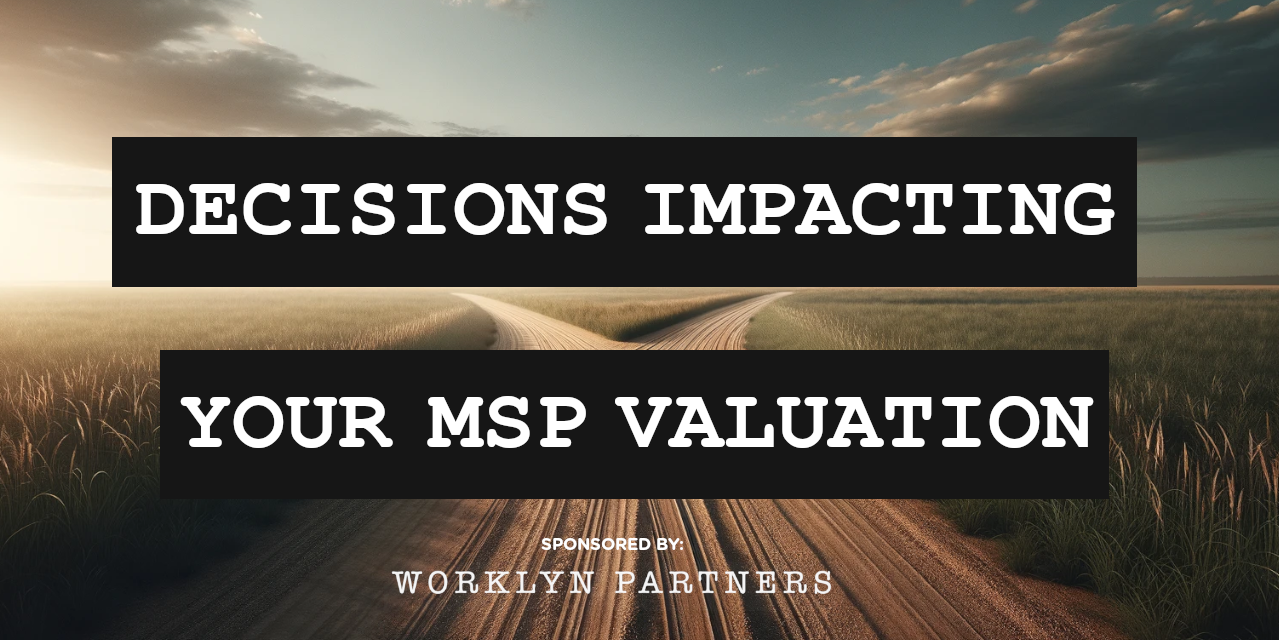Growing a Managed Services business is a marathon, not a sprint. Knowing that your time horizon is long, the value of forward-thinking decisions becomes great. Time can also compound the benefit of these thoughtful decisions, which may accrue in the form of equity value in your business. If you are a technical MSP Owner or Executive, you can likely relate to this in terms of technical debt. This is when you have to constantly rework an infrastructure over time due to short-sighted decisions that were made along the way. When this is avoided, the rate of improvement dramatically increases and so does the ROI.
We’ve identified some of the most common everyday decisions that MSPs make that will ultimately impact their company’s value later on (both positively and negatively):
Geographic Expansion
When an MSP organically expands into a new geographic area it is often a customer-led initiative. This means that either a new customer opportunity has presented itself outside of the existing service area, or an existing customer has migrated (or expanded) into that new territory and thus the MSPs follow suit to support them. While this is often the beginning of a larger expansion opportunity, it’s important to step back from the situation to look at how this may impact the financial outlook of the business down the road.
Most acquirers are looking for strategic geographies. In the case of private equity, they may be looking at markets that will support a higher margin and price per endpoint. Pricing varies dramatically from one market to another and thus if the acquirer is going to consolidate their backend, they want to participate in markets with high revenue potential after the acquisition. In the case of a competitor acquisition, this is often driven by their motivation to either enter a new market that would be too expensive to access otherwise or increase their dominance in a market they already participate in. Be mindful of this before following your customers into a new service area and take stock of who the competitors are and where the region falls on the pricing scale.
Outsourced Labor
Almost every MSP gets to the point where they consider scaling their team through outsourcing. When I was an MSP, we successfully transitioned from in-house Level 1 support to a completely outsourced model. During this process, we didn’t necessarily have to fire anyone. We simply promoted everyone previously on the front line to Level 2 and were slower to hire in situations where an employee left or our customer base grew.
What is interesting about these decisions is that they can dramatically change your “Revenue Per Employee,” which is a metric that is sometimes used to evaluate an MSP (or any other business). Given the frequency of outsourcing and vendor partnerships to provide technical services, I feel as though this particular metric is not all that useful in our industry compared to others, however that’s not to say that it is not a factor. Assuming you are able to maintain your quality of service, most opportunities that you have to increase your revenue per employee should also help your valuation. There are a few exceptions to this which I will cover in the next section.

Technical Expertise
One of the common challenges that many MSPs face is how to handle technical specialization across their workforce. This is especially true in the early stages of growth when the company may not be able to justify a full time resource with a particular skill set. For example, having an Engineer that is heavily trained in architecting Microsoft Azure and/or Amazon Web Services would be useful, but if you are not selling such services to every customer on a regular basis, this resource may go underutilized. This is what leads many MSPs to outsource these functions on an as needed basis.
While this is typically good for reducing overhead expenses (and increasing revenue per employee) in the short term, it has its downsides. In terms of valuations, many acquirers are willing to pay a premium for companies with highly upskilled individuals in key areas of importance. This includes but is not limited to Cloud, AI, Security & Compliance, NOC, IoT, DevOps, Disaster Recovery, etc. You can also see why company culture and retention become increasingly important, because once you have these talented individuals on your team, you need to be able to keep them. Otherwise you will risk losing all of the value that you have built up with your team over time.
Vertical Specialization
The way that MSPs choose to verticalize their services has always been interesting to me. In the case of our company, we went from supporting the shared workspace that housed our small office, to partnering with their vertically specialized VoIP vendor to sign new coworking industry clients. This eventually became our largest vertical, all stemming from a relationship that we had with our landlord. This type of serendipity happens all the time with MSPs, but some choose not to follow the opportunity. In our case, we were immediately presented opportunities well outside of our service area, which we could have easily declined. Thankfully, we made it work, which contributed to the highest growth years that our company had ever had.
In the same way that acquirers are willing to pay a premium for technical capabilities, vertical specialization is also an attractive quality. This is because they can often leverage this specialization across companies or service areas where they may be lacking. For example, a platform that is rolling up localized MSPs could lend Legal vertical expertise from one area to another. If you are considering whether or not to take a leap of faith into a vertical opportunity that may have presented itself, this is certainly something to consider when analyzing your risk versus reward.

Customer Concentration
I recently talked to an MSP who was able to double their ARR on a single new contract, officially putting them over the seven figure mark. While this is an incredible opportunity for them to grow their business and their mid-market / enterprise expertise, it goes to show that not all revenue is created equal. For example, if 50% of their revenue comes from customers that are 5-25 employees and the other 50% is from a single customer that is 250+ employees then it becomes very difficult to put a value on the company, regardless of how healthy their EBITDA margin might be.
Having said that, no one in their right mind would turn down such an opportunity simply because of how it may impact valuation, however it’s important to understand your risk profile. To avoid being flagged as high risk, you would want to make sure that no customer makes up over 20% of your revenue and that your top 5 customers account for less than 60% of your revenue. If you can get to this point, you are likely to avoid any valuation pitfalls that may come with customer concentration.
Non-Technical Leadership
When I meet a new MSP for the first time, I always ask what their org chart looks like from a non-technical perspective. From my personal experience, I have found that companies with dedicated employees for functions such as Finance, Operations, Sales & Marketing typically signal high maturity and growth opportunities. That’s not to say that going out and hiring a Social Media Coordinator will suddenly make your company more valuable, rather these should be strategic hires with B2B expertise that can look at the company through a non-technical lens.
The impact that this will have on your valuation will largely depend on who the acquiring company is and how (or if) they plan to integrate it into a larger platform. For example, if you have a CEO or COO that is not an Owner, this could be attractive to a PE firm that is looking to simply buy you out and add the company to their portfolio. This way the Executive team can stay intact to help with both employee and customer retention during the transition. In the case of a consolidation play, the company may not need two CEOs, which may make more sense to severance the Executives, thus increasing EBITDA margins by the amount of their salaries.

Revenue Types
If you are an MSP that is active in the IT Channel, then you’ve had no shortage of people telling you to “increase your MRR.” While this is definitely good in theory, it’s easier said than done. This is especially true if you’d like to maintain a certain margin. I have seen many MSPs that have taken this advice very literally, to the point where they’ve essentially given away all of their profit in the form of MRR driven value-adds that never quite reach scale.
The problem with this is that despite the size of your MRR, the base of your valuation will be in terms of EBITDA. If it’s less than 10%, then you may have been better off investing in more projects and non-recurring revenue that add both value and profit (as long as that does not exceed 50% of your total revenue). In my experience, executing strategic and proactive projects has always been a great way to boost customer retention and earn a higher margin in both recurring and T&M revenue.
Conclusion
Even if you don’t plan on exiting your business for a decade from now, it’s incredibly important to track how these valuations evolve over time and what everyday decisions may impact them in the future. This is also true whether you are the acquired or the acquirer. In the same way that you might be routinely checking in on your retirement savings, consider doing the same with your business to see how the value might have changed based on your decision making, as well as the current state of the market.
To better help those on this journey, we have teamed up with Worklyn Partners to host a free virtual MSP valuation workshop that covers the basics of how companies are valued today and some helpful exercises that will help you put these concepts into practice. Come join us!

SPONSORED BY ZEST
















